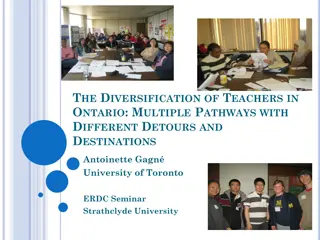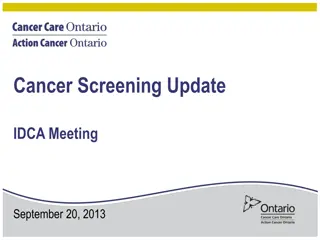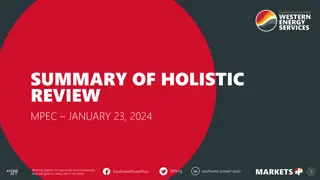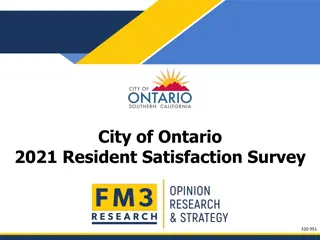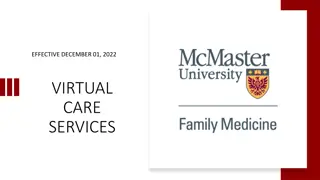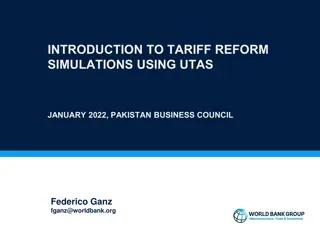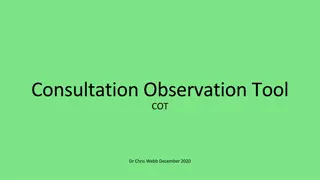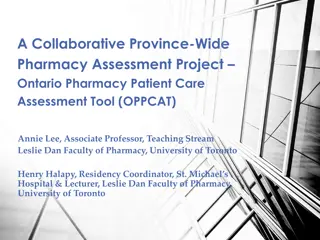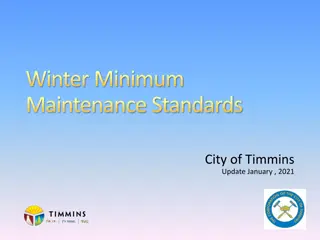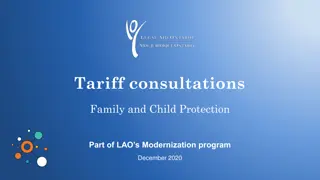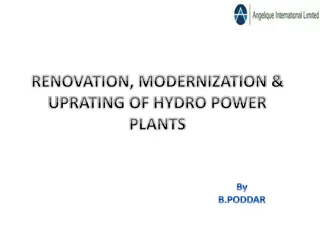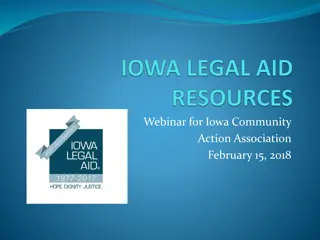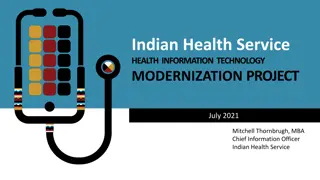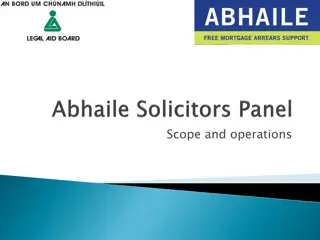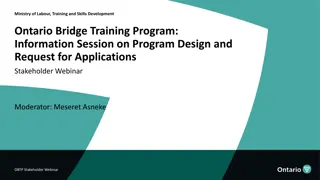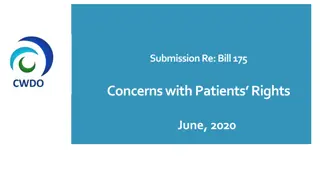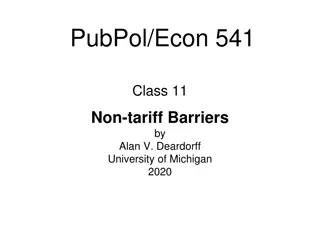Legal Aid Ontario's Tariff Consultations and Modernization Program
Legal Aid Ontario (LAO) is modernizing its legal aid system to better serve the community by seeking input on tariff reforms, improving access to information, and redesigning Legal Aid Online. Through cost-neutral updates, LAO aims to enhance efficiency and accountability while ensuring fair payment reflective of the work done. Feedback from consultations will guide future decisions on simplifying billing rules and facilitating easier access to essential information for legal aid work.
Download Presentation

Please find below an Image/Link to download the presentation.
The content on the website is provided AS IS for your information and personal use only. It may not be sold, licensed, or shared on other websites without obtaining consent from the author.If you encounter any issues during the download, it is possible that the publisher has removed the file from their server.
You are allowed to download the files provided on this website for personal or commercial use, subject to the condition that they are used lawfully. All files are the property of their respective owners.
The content on the website is provided AS IS for your information and personal use only. It may not be sold, licensed, or shared on other websites without obtaining consent from the author.
E N D
Presentation Transcript
Tariff consultations Immigration & refugee law Part of LAO s Modernization program December 2020
Agenda 1.Welcome and introduction 2.Background and purpose 3.Discussion 4.Next steps 2 2
Welcome and introductions 1. Welcome and opening remarks David McKillop, VP Strategy & Public Affairs 2. Remarks Darcy DesLauriers, Director, Lawyer Services & Payments 3. Introductions LAO Participants 3 3
Background Updating the way we pay lawyers is an important part of LAO s Modernization program that aims to modernize Ontario s legal aid system, allowing LAO to be more responsive to community needs, and putting our clients at the centre of everything we do. To this end, we are seeking your input on tariff reform, redesigning Legal Aid Online and improving access to information necessary to bill successfully. 4 4
Context Updating the way LAO pays lawyers is an important part of LAO s modernization program, which aims to modernize Ontario s legal aid system and allow LAO to be more responsive to lawyer, client and community needs, while continuing to be a responsible steward of public funds. We don t currently have funding to make increases to the tariff, so the focus of these consultations are on immediate, cost-neutral updates. We do, however, want to hear from you about where future increases might be applied, if and when possible. We will use your input to determine how best simplify our current billing rules, improve Legal Aid Online to reduce the time and effort required to submit accounts, and provide easier online access to information. Our goal is to receive as much feedback and as many perspectives as possible so we can move forward and make important decisions about how to modify the way we pay you, revamp Legal Aid Online and facilitate easier online access to information you need to do legal aid work. 5 5
Principles Flexibility to adjust to changing needs Cost effectiveness to promote sustainability Efficiency to ensure the best use of resources Accountability Fairness to ensure payment is reflective of the work done Incentive for good client service and for lawyers to accept LAO clients 6 6
Consultation process three parts 1. Small group discussions based on area of law open to all panel members 2. Survey sent to all panel members 3. Written submissions 7 7
What we have heard from you Legal Aid Online is outdated and difficult to navigate. Discretion payments are unpredictable and infrequently approved. The tariff is inadequate, particularly to deliver high quality legal services. The administrative effort for billing is too onerous. Only 24 percent of respondents to the 2019 Lawyer Satisfaction Survey viewed LAO billing and payment practices positively, the lowest percentage compared to other areas of LAO activity surveyed. 8 8
Process 1. The first set of questions are of a general nature and your views on these issues will help focus our work going forward. 2. The questions that follow are based on feedback that has been provided in the past and we want to get your views on these issues and potential solutions. 3. We hope that our conversation these issues will generate further discussion on other issues and possible solutions. 9 9
Improving Legal Aid Online and the Tariff 1. What aspect of billing takes up the most amount of time? 2. What is the biggest impediment to finding information regarding billing or billing rules? 3. How can LAO simplify billing for you? 4. What additional features would you like to see in an online portal? 5. What are your top three billing grievances unrelated to the tariff? 6. Where do you feel that the tariff is most inadequate? 7. How would you improve discretion? 10 10
Start and end times for hearings 8. LAO s current hourly tariff rules require panel members to record both start and end times in their detailed dockets for those hearings which add tariff for the attendance. Would you support a counsel fee for these attendances which are based on either a set number hours or a block fee? This would eliminate the requirement that counsel keep track of start and end times for court appearances and LAO would only need to confirm that the particular attendance took place. 11 11
Adjusting tariff inadequacies 1. For refugee claims, LAO s tariff allots 16 hours of preparation time for cases whether straightforward or complex. The only additional tariff allotments available are for preparation of written submissions (two hours) and preparation for the subsequent sitting of a hearing which did not conclude (two hours). LAO has heard that making requests for discretionary increases are time-consuming and frequently not approved. Would payments be more reflective of work done if the tariff hours for hearing preparation were set lower, with additional tariff allotments available for specific complexities? If so, what suggestions do you have for the specific types of tasks or circumstances that should be included in new tariff allotments? 2. The refugee tariff currently allots seven hours for basis of claim (BOC) preparation and nine hours for hearing preparation. The nine-hour authorization is available any time after the claim is referred to the Refugee Protection Division. For claims on the Immigration and Refugee Board s file review policy country/claim type list, the allotment is 10 hours for BOC drafting and preparation of client disclosure, and six hours for hearing preparation, available only if the claim does proceed to a hearing. Should LAO adjust these allotments, and if so, how ? 3. LAO currently uses an hourly tariff system to pay lawyers to do immigration and refugee work, however most private retainers in this area of law use a block fees rather than an hourly rate. Should LAO move to a block fee model in immigration and refugee? Would it be more appropriate for certain types of proceedings than others? What would you see as possible advantages and disadvantages of a block fee model? 12 12
Adjusting tariff inadequacies 5. Are there adjustments LAO could make to the structure of the tariff for other services (e.g. Refugee Appeal Division appeals, judicial reviews, stays, humanitarian and compassionate applications, pre-removal risk assessments, Immigration Appeal Division appeals, detention reviews, etc.) that better reflect the required work, in particular as it relates to better compensating lawyers for more complex files? 6. LAO uses case management to set budgets for particularly complex criminal and family law matters, outside of the normal tariff. Are there particular types of complex immigration and refugee cases that should be case managed? 7. Refugee and immigration certificates come with preset limits on disbursements. These limits can be raised if special authorization is requested and approved. Should adjustments be made to LAO s disbursements coverage, and the process/rules for requesting special authorization? 13 13
Other matters What other matters would you like to raise, that have not been discussed today? 14 14
Next steps and estimated timelines 1. Review and aggregate the consultation feedback, cost analysis and development of survey questions (March 2021) 2. Send out follow-up survey and written submissions (April 2021) 3. Survey analysis and summary of survey/submission findings and highlights (April/May 2021) 4. Communication to the bar and implementation of changes (TBD) 15 15
Questions? TariffConsult20 TariffConsult20- -21@lao.on.ca 21@lao.on.ca


